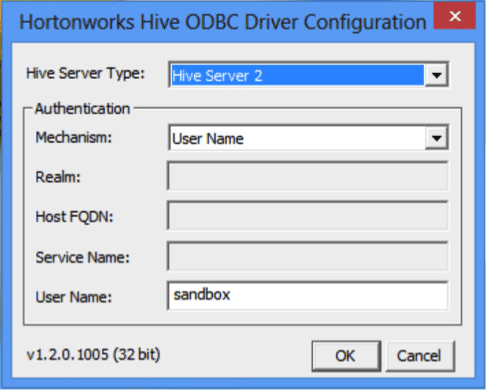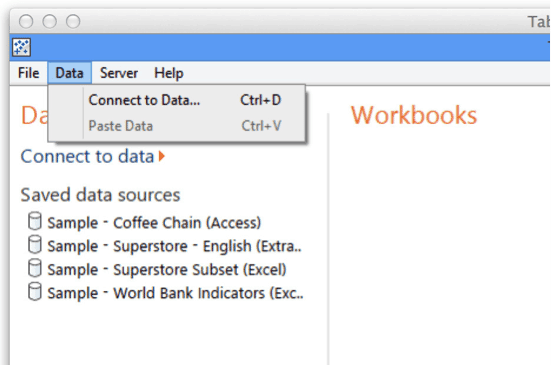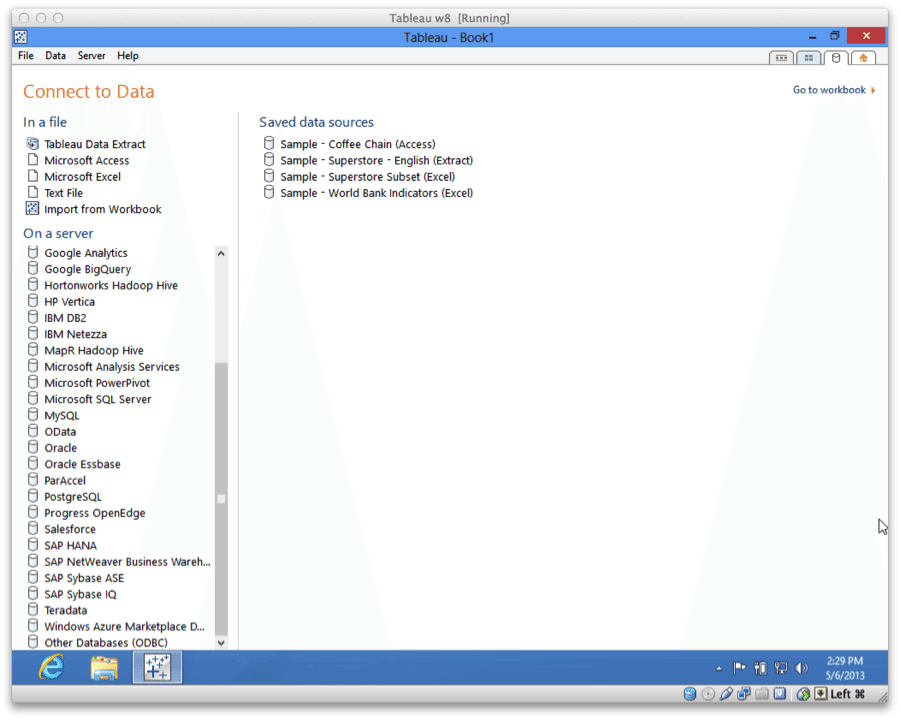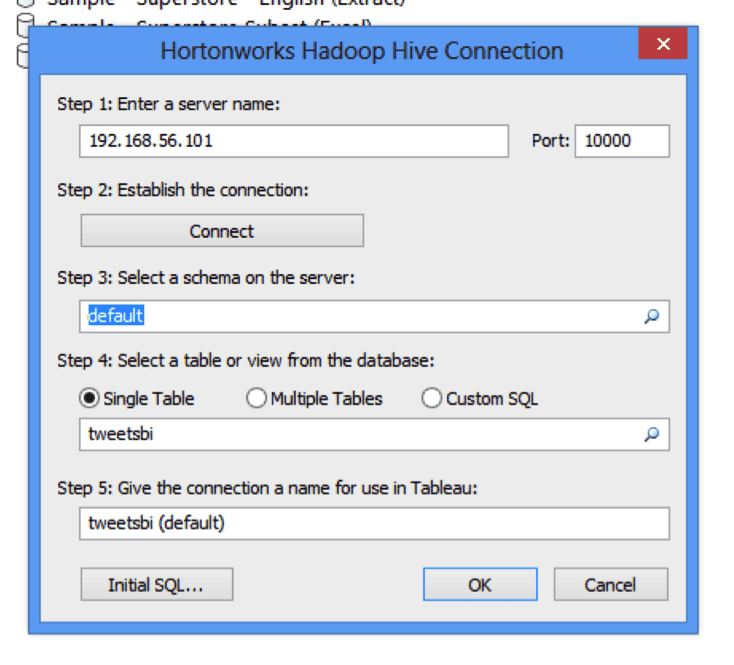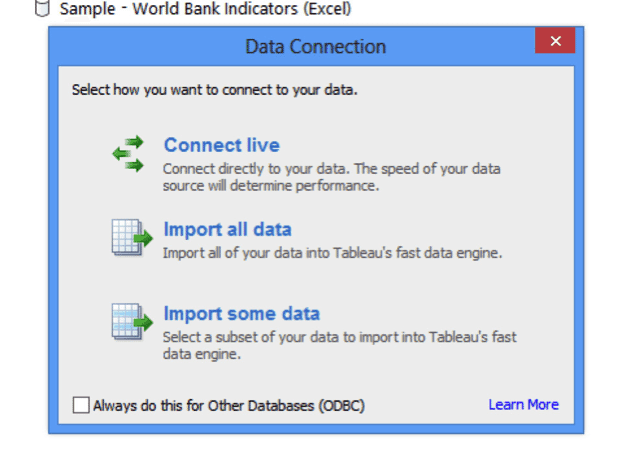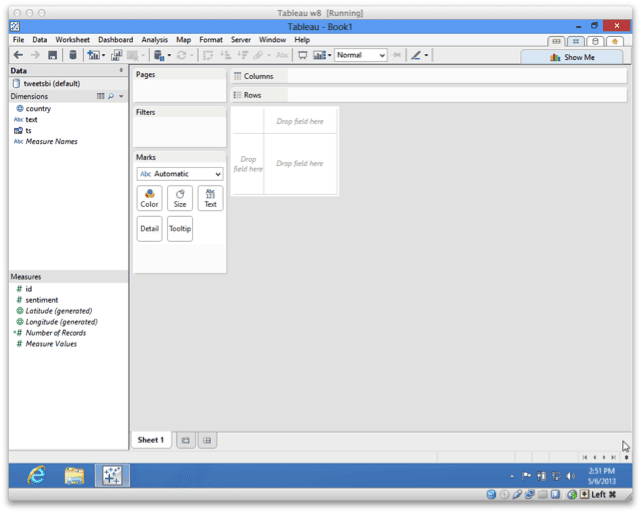Spark 1.1.0 Technical Preview – with HDP 2.1.5
Introduction
The Spark Technical preview lets you evaluate Apache Spark 1.1.0 on YARN with HDP 2.1.5. With YARN, Hadoop can now support various types of workloads; Spark on YARN becomes yet another workload running against the same dataset and hardware resources.
This technical preview describes how to:
- Run Spark on YARN and runs the canonical Spark examples of running SparkPI and Wordcount
- Work with a built-in UDF, collect-list, a key feature of Hive 13. This technical preview provides support for Hive 0.13.1 and instructions on how to call this UDF from Spark shell.
- Use ORC file as an HadoopRDD.
When you are ready to go beyond that these tasks, try the machine learning examples at Apache Spark.
Requirements
To evaluate Spark on the HDP 2.1 Sandbox, add an entry to on your Host machine in /etc/hosts to enable Sandbox or localhost to resolve to 127.0.0.1. For example:
127.0.0.1 localhost sandbox.hortonworks.com
Installing
The Spark 1.1.0 Technical Preview is provided as a single tarball.
Download the Spark Tarball
Use wget to download the Spark tarball:
wget http://public-repo-1.hortonworks.com/spark/centos6/1.1.0/tars/spark-1.1.0.2.1.5.0-695-bin-2.4.0.2.1.5.0-695.tgz
Copy the Spark Tarball to a HDP 2.1 Cluster:
Copy the downloaded Spark tarballto your HDP 2.1 Sandbox or to your Hadoop cluster.
For example, the following command copies Spark to HDP 2.1 Sandbox:
scp -P 2222 spark-1.1.0.2.1.5.0-695-bin-2.4.0.2.1.5.0-695.tgz root@127.0.0.1:/root
Note: The password for HDP 2.1 Sandbox is hadoop.
Untar the Tarball
To untar the Spark tarball, run:
tar xvfz spark-1.1.0.2.1.5.0-695-bin-2.4.0.2.1.5.0-695.tgz
Set the YARN environment variable
Specify the appropriate directory for your Hadoop cluster. For example, if your Hadoop and YARN config files are in /etc/hadoop/conf:
export YARN_CONF_DIR=/etc/hadoop/conf
Set yarn.application.classpath in yarn-site.xml. In the HDP 2.1 Sandbox, yarn.application.classpath is already set, so there is no need to set yarn.application.classpath to set up Spark on the HDP 2.1 Sandbox.
If you are running Spark against your own HDP 2.1 cluster ensure that yarn-site.xml has the following value for yarn.application.classpath property:
<property>
<name>yarn.application.classpath</name>
<value>/etc/hadoop/conf,/usr/lib/hadoop/*,/usr/lib/hadoop/lib/*,/usr/lib/hadoop-hdfs/*,/usr/lib/hadoop-hdfs/lib/*,/usr/lib/hadoop-yarn/*,/usr/lib/hadoop-yarn/lib/*</value>
</property>
Run Spark Pi Example
To test compute intensive tasks in Spark, the Pi example calculates pi by “throwing darts” at a circle. The example points in the unit square ((0,0) to (1,1)) and sees how many fall in the unit circle. The fraction should be pi/4, which is used to estimate Pi.
To calculate Pi with Spark:
Change to your Spark directory:
cd spark-1.1.0.2.1.5.0-695-bin-2.4.0.2.1.5.0-695
Run the Spark Pi example:
./bin/spark-submit --class org.apache.spark.examples.SparkPi --master yarn-cluster --num-executors 3 --driver-memory 512m --executor-memory 512m --executor-cores 1 lib/spark-examples*.jar 10
Note: The Pi job should complete without any failure messages and produce output similar to:
14/09/12 09:52:01 INFO yarn.Client: Application report from ResourceManager:
application identifier: application_1410479103337_0003
appId: 3
clientToAMToken: null
appDiagnostics:
appMasterHost: sandbox.hortonworks.com
appQueue: default
appMasterRpcPort: 0
appStartTime: 1410540670802
yarnAppState: FINISHED
distributedFinalState: SUCCEEDED
appTrackingUrl: http://sandbox.hortonworks.com:8088/proxy/application_1410479103337_0003/A
appUser: root
To view the results in a browser, copy the appTrackingUrl and go to:
http://sandbox.hortonworks.com:8088/proxy/application_1410479103337_0003/A
Note: The two values above in bold are specific to your environment. These instructions assume that HDP 2.1 Sandbox is installed and that /etc/hosts is mapping sandbox.hortonworks.com to localhost.
Using WordCount with Spark
Click the logs link in the bottom right
The browser shows the YARN container output after a redirect.
Note the following output on the page. (Other output omitted for brevity.)
…..
14/09/12 09:52:00 INFO yarn.ApplicationMaster: AppMaster received a signal.
14/09/12 09:52:00 INFO yarn.ApplicationMaster: Deleting staging directory .sparkStaging/application_1410479103337_0003
14/09/12 09:52:00 INFO yarn.ApplicationMaster$$anon$1: Invoking sc stop from shutdown hook
14/09/12 09:52:00 INFO ui.SparkUI: Stopped Spark web UI at http://sandbox.hortonworks.com:42078
14/09/12 09:52:00 INFO spark.SparkContext: SparkContext already stopped
Log Type: stdout
Log Length: 23
Pi is roughly 3.144484
Copy input file for Spark WordCount Example
Upload the input file you want to use in WordCount to HDFS. You can use any text file as input. In the following example, log4j.properties is used as an example:
hadoop fs -copyFromLocal /etc/hadoop/conf/log4j.properties /tmp/data
Run Spark WordCount
To run WordCount:
Run the Spark shell:
./bin/spark-shell
Output similar to below displays before the Scala REPL prompt, scala>:
Spark assembly has been built with Hive, including Datanucleus jars on classpath
14/09/11 17:33:47 INFO spark.SecurityManager: Changing view acls to: root,
14/09/11 17:33:47 INFO spark.SecurityManager: Changing modify acls to: root,
14/09/11 17:33:47 INFO spark.SecurityManager: SecurityManager: authentication disabled; ui acls disabled; users with view permissions: Set(root, ); users with modify permissions: Set(root, )
14/09/11 17:33:47 INFO spark.HttpServer: Starting HTTP Server
14/09/11 17:33:47 INFO server.Server: jetty-8.y.z-SNAPSHOT
14/09/11 17:33:47 INFO server.AbstractConnector: Started SocketConnector@0.0.0.0:44066
14/09/11 17:33:47 INFO util.Utils: Successfully started service 'HTTP class server' on port 44066.
Welcome to
____ __
/ __/__ ___ _____/ /__
_\ \/ _ \/ _ `/ __/ '_/
/___/ .__/\_,_/_/ /_/\_\ version 1.1.0
/_/
Spark context available as sc.
scala>
At the Scala REPL prompt enter:
val file = sc.textFile("hdfs://sandbox.hortonworks.com:8020/tmp/data")
val counts = file.flatMap(line => line.split(" ")).map(word => (word, 1)).reduceByKey(_ + _)
counts.saveAsTextFile("hdfs://sandbox.hortonworks.com:8020/tmp/wordcount")
Viewing the WordCount output with Scala Shell
To view the output in Scala Shell:
scala > counts.count()
To print the full output of the WordCount job:
scala > counts.toArray().foreach(println)
Viewing the WordCount output with HDFS
To read the output of WordCount using HDFS command:
Exit the scala shell.
scala > exit
View WordCount Results:
hadoop fs -ls /tmp/wordcount
It should display output similar to:
/tmp/wordcount/_SUCCESS
/tmp/wordcount/part-00000
/tmp/wordcount/part-00001
Use the HDFS cat command to see the WordCount output. For example:
hadoop fs -cat /tmp/wordcount/part-00000
Running Hive 0.13.1 UDF
Before running Hive examples run the following steps:
Copy hive-site to Spark conf
For example, ensure the paths used match your environment:
cp /usr/lib/hive/conf/hive-site.xml /root/spark-1.1.0.2.1.5.0-695-bin-2.4.0.2.1.5.0-695/conf/
Comment out ATS Hooks
Ensure the following properties in the Spark copy of hive-site.xml are removed (or commented out):
<name>hive.exec.pre.hooks</name>
<value>org.apache.hadoop.hive.ql.hooks.ATSHook</value>
<name>hive.exec.failure.hooks</name>
<value>org.apache.hadoop.hive.ql.hooks.ATSHook</value>
<name>hive.exec.post.hooks</name>
<value>org.apache.hadoop.hive.ql.hooks.ATSHook</value>
Hive 0.13.1 provides a new built-in UDF collect_list(col) which returns a list of objects with duplicates.
Launch Spark Shell on YARN cluster
./bin/spark-shell --num-executors 2 --executor-memory 512m --master yarn-client
Create Hive Context
scala> val hiveContext = new org.apache.spark.sql.hive.HiveContext(sc)
You should see output similar to the following:
…
hiveContext: org.apache.spark.sql.hive.HiveContext = org.apache.spark.sql.hive.HiveContext@7d9b2e8d
Create Hive Table
scala> hiveContext.hql("CREATE TABLE IF NOT EXISTS TestTable (key INT, value STRING)")
You should see output similar to the following:
…
res1: org.apache.spark.sql.SchemaRDD =
SchemaRDD[5] at RDD at SchemaRDD.scala:103
== Query Plan ==
<Native command: executed by Hive>
Load example KV value data into Table
scala> hiveContext.hql("LOAD DATA LOCAL INPATH 'examples/src/main/resources/kv1.txt' INTO TABLE TestTable")
You should see output similar to the following:
14/09/12 10:05:20 INFO log.PerfLogger: </PERFLOG method=Driver.run start=1410541518525 end=1410541520023 duration=1498 from=org.apache.hadoop.hive.ql.Driver>
res2: org.apache.spark.sql.SchemaRDD =
SchemaRDD[8] at RDD at SchemaRDD.scala:103
== Query Plan ==
<Native command: executed by Hive>
Invoke Hive collect_list UDF
scala> hiveContext.hql("from TestTable SELECT key, collect_list(value) group by key order by key").collect.foreach(println)
You should see output similar to the following:
…
[489,ArrayBuffer(val_489, val_489, val_489, val_489)]
[490,ArrayBuffer(val_490)]
[491,ArrayBuffer(val_491)]
[492,ArrayBuffer(val_492, val_492)]
[493,ArrayBuffer(val_493)]
[494,ArrayBuffer(val_494)]
[495,ArrayBuffer(val_495)]
[496,ArrayBuffer(val_496)]
[497,ArrayBuffer(val_497)]
[498,ArrayBuffer(val_498, val_498, val_498)]
Using ORC file as HadoopRDD
Create a new Hive Table with ORC format
scala>hiveContext.sql("create table orc_table(key INT, value STRING) stored as orc")
Load Data into the ORC table
scala>hiveContext.hql("INSERT INTO table orc_table select * from testtable")
Verify that Data is loaded into the ORC table
scala>hiveContext.hql("FROM orc_table SELECT *").collect().foreach(println)
Read ORC Table from HDFS as HadoopRDD
scala> val inputRead = sc.hadoopFile("hdfs://sandbox.hortonworks.com:8020/apps/hive/warehouse/orc_table",classOf[org.apache.hadoop.hive.ql.io.orc.OrcInputFormat],classOf[org.apache.hadoop.io.NullWritable],classOf[org.apache.hadoop.hive.ql.io.orc.OrcStruct])
Verify we can manipulate the ORC record through RDD
scala> val k = inputRead.map(pair => pair._2.toString)
scala> val c = k.collect |
You should see output similar to the following:
...
scheduler.DAGScheduler: Stage 7 (collect at <console>:16) finished in 0.518 s
14/09/16 11:54:58 INFO spark.SparkContext: Job finished: collect at <console>:16, took 0.532203184 s
c1: Array[String] = Array({238, val_238}, {86, val_86}, {311, val_311}, {27, val_27}, {165, val_165}, {409, val_409}, {255, val_255}, {278, val_278}, {98, val_98}, {484, val_484}, {265, val_265}, {193, val_193}, {401, val_401}, {150, val_150}, {273, val_273}, {224, val_224}, {369, val_369}, {66, val_66}, {128, val_128}, {213, val_213}, {146, val_146}, {406, val_406}, {429, val_429}, {374, val_374}, {152, val_152}, {469, val_469}, {145, val_145}, {495, val_495}, {37, val_37}, {327, val_327}, {281, val_281}, {277, val_277}, {209, val_209}, {15, val_15}, {82, val_82}, {403, val_403}, {166, val_166}, {417, val_417}, {430, val_430}, {252, val_252}, {292, val_292}, {219, val_219}, {287, val_287}, {153, val_153}, {193, val_193}, {338, val_338}, {446, val_446}, {459, val_459}, {394, val_394}, {...
Running the Machine Learning Spark Application
Make sure all of your nodemanager nodes have gfortran library. If not, you need to install it in all of your nodemanager nodes.
sudo yum install gcc-gfortran
Note: It is usually available in the update repo for CentOS. For example:
sudo yum install gcc-gfortran --enablerepo=update
MLlib throws a linking error if it cannot detect these libraries automatically. For example, if you try to do Collaborative Filtering without gfortran runtime library installed, you will see the following linking error:
java.lang.UnsatisfiedLinkError: org.jblas.NativeBlas.dposv(CII[DII[DII)I
at org.jblas.NativeBlas.dposv(Native Method)
at org.jblas.SimpleBlas.posv(SimpleBlas.java:369)
at org.jblas.Solve.solvePositive(Solve.java:68)
Visit http://spark.apache.org/docs/latest/mllib-guide.html for Spark ML examples.
Troubleshooting
Issue:
Spark submit fails.
Note the error about failure to set the env:
Exception in thread "main" java.lang.Exception: When running with master 'yarn-cluster' either HADOOP_CONF_DIR or YARN_CONF_DIR must be set in the environment.
at
org.apache.spark.deploy.SparkSubmitArguments.checkRequiredArguments(SparkSubmitArguments.scala:182)
…
Solution:
Set the environment variable YARN_CONF_DIR as following.
export YARN_CONF_DIR=/etc/hadoop/conf
Issue:
Spark submitted job fails to run and appears to hang.
In the YARN container log you will notice the following error:
14/07/15 11:36:09 WARN YarnClusterScheduler: Initial job has not accepted any resources; check your cluster UI to ensure that workers are registered and have sufficient memory
14/07/15 11:36:24 WARN YarnClusterScheduler: Initial job has not accepted any resources; check your cluster UI to ensure that workers are registered and have sufficient memory
14/07/15 11:36:39 WARN YarnClusterScheduler: Initial job has not accepted any resources; check your cluster UI to ensure that workers are registered and have sufficient memory
Solution:
The Hadoop cluster must have sufficient memory for the request. For example, submitting the following job with 1GB memory allocated for executor and Spark driver fails with the above error in the HDP 2.1 Sandbox. Reduce the memory asked for the executor and the Spark driver to 512m and re-start the cluster.
./bin/spark-submit --class org.apache.spark.examples.SparkPi --master yarn-cluster --num-executors 3 --driver-memory 512m --executor-memory 512m --executor-cores 1 lib/spark-examples*.jar 10
Issue:
Error message aboutHDFS non-existent InputPath when running Machine Learning examples.
org.apache.hadoop.mapred.InvalidInputException: Input path does not exist: hdfs://sandbox.hortonworks.com:8020/user/root/mllib/data/sample_svm_data.txt
at
org.apache.hadoop.mapred.FileInputFormat.singleThreadedListStatus(FileInputFormat.java:285)
at org.apache.hadoop.mapred.FileInputFormat.listStatus(FileInputFormat.java:228)
at org.apache.hadoop.mapred.FileInputFormat.getSplits(FileInputFormat.java:304)
at org.apache.spark.rdd.HadoopRDD.getPartitions(HadoopRDD.scala:140)
at org.apache.spark.rdd.RDD$$anonfun$partitions$2.apply(RDD.scala:207)
at org.apache.spark.rdd.RDD$$anonfun$partitions$2.apply(RDD.scala:205)
at scala.Option.getOrElse(Option.scala:120)
at org.apache.spark.rdd.RDD.partitions(RDD.scala:205)
at org.apache.spark.rdd.MappedRDD.getPartitions(MappedRDD.scala:28)
at org.apache.spark.rdd.RDD$$anonfun$partitions$2.apply(RDD.scala:207)
……
……
……
(Omitted for brevity.)
Solution:
Ensure that the input data is uploaded to HDFS.
Known Issues
Spark Thrift Server does not work with this tech preview.
There are no other known issues for Apache Spark. Visit the forum for the latest discussions on issues:
http://hortonworks.com/community/forums/forum/spark/
Further Reading
Apache Spark documentation is available here:
https://spark.apache.org/docs/latest/
The post Spark 1.1.0 Technical Preview on HDP 2.1.5 appeared first on Hortonworks.
